Gas fireplaces are a popular choice for many homeowners due to their convenience, efficiency, and the cozy ambiance they provide. However, like all appliances, the components of a gas fireplace can wear out over time, necessitating replacement parts. One critical component that may need replacing is the burner. Understanding the role and importance of the burner, the types available, and the process of replacement is essential for maintaining the safety and efficiency of your gas fireplace.

The Role of a Gas Fireplace Burner
The burner in a gas fireplace is responsible for the combustion process. It mixes gas with air and ignites it to produce flames, which generate heat. The design and condition of the burner directly impact the flame’s appearance and the fireplace’s heating efficiency. A well-functioning burner ensures a clean burn, meaning it effectively uses the gas to produce heat with minimal emissions. Over time, the burner can become clogged or damaged, affecting the fireplace’s performance and necessitating replacement.
Burners are typically made from durable materials like stainless steel or cast iron to withstand high temperatures and prolonged use. However, despite their durability, factors such as improper maintenance, high usage, or exposure to corrosive elements can cause wear and tear. Regular inspections and maintenance are crucial to detect issues early and ensure the burner’s longevity.
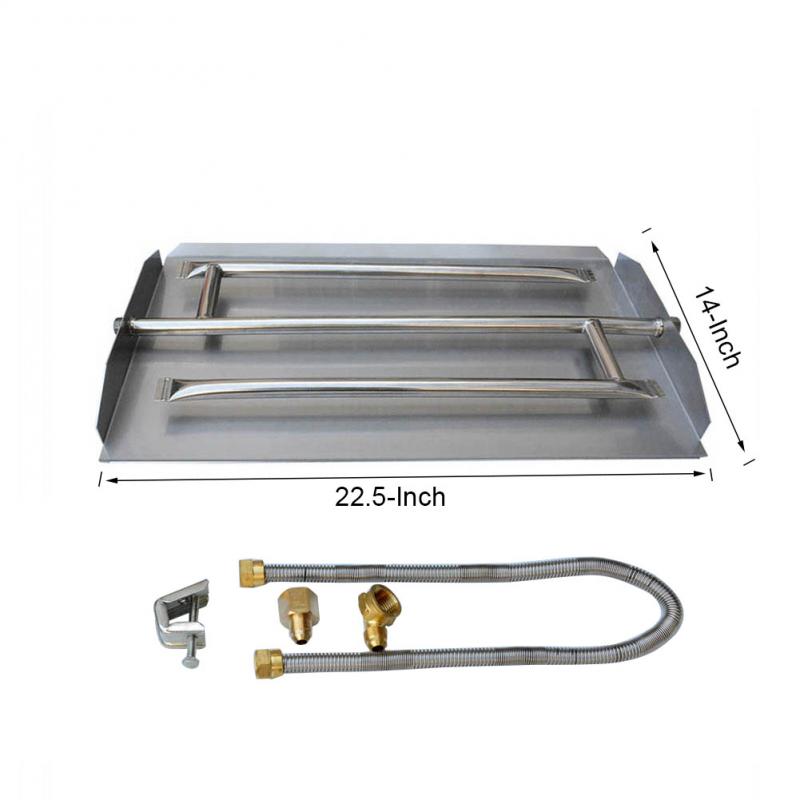
Types of Gas Fireplace Burners
There are several types of gas fireplace burners, each designed to meet specific needs and preferences. The most common types include vented, ventless, and direct vent burners. Each type has unique features, benefits, and installation requirements.
Vented Burners: Vented burners are designed for fireplaces that use a chimney or flue to expel combustion gases outside. These burners produce realistic flames and are ideal for creating a traditional fireplace look. However, they require proper ventilation to operate safely and efficiently.
Ventless Burners: Ventless burners, also known as vent-free or unvented burners, do not require a chimney or flue. They are designed to burn gas efficiently, producing minimal emissions that are safe to release directly into the room. These burners are easier to install and can be placed in rooms without existing venting systems. However, they must meet strict safety standards to ensure they do not compromise indoor air quality.
Direct Vent Burners: Direct vent burners use a sealed system to draw air from outside for combustion and expel exhaust gases directly outside through a dedicated vent. This type of burner offers high efficiency and safety, as it does not affect indoor air quality. Direct vent burners are suitable for homes with well-insulated, airtight rooms.

Signs You Need to Replace Your Gas Fireplace Burner
Recognizing the signs that indicate your gas fireplace burner needs replacement is crucial for maintaining safety and efficiency. Several symptoms can suggest it’s time for a new burner.
Inconsistent Flames: If the flames produced by your fireplace are uneven, weak, or irregular, it may indicate a problem with the burner. Blockages or damage can prevent the burner from mixing gas and air properly, resulting in poor flame quality.
Soot Buildup: Excessive soot buildup on the fireplace or surrounding surfaces can signal incomplete combustion, often caused by a faulty burner. A clean burn should produce minimal soot.
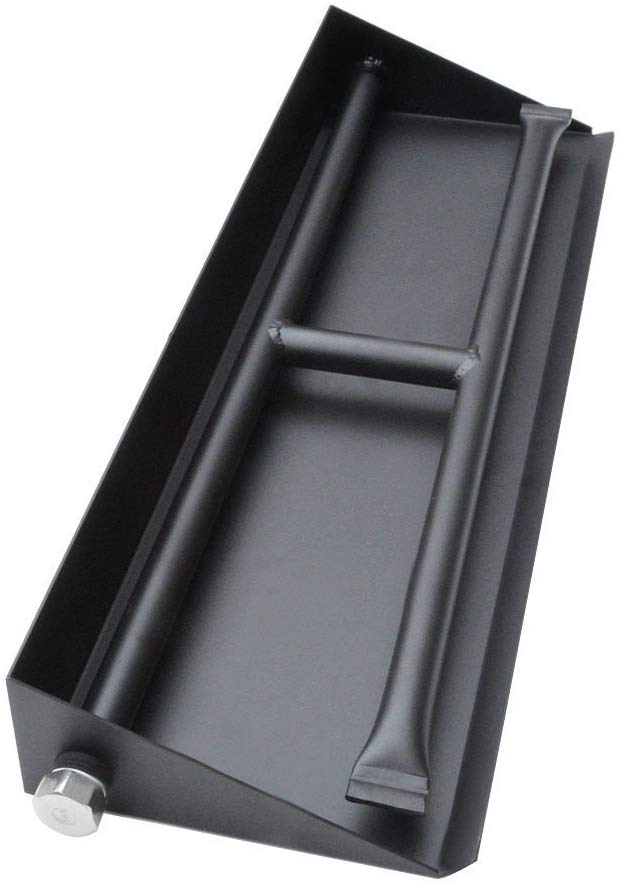
Strange Odors: Unusual smells, particularly the scent of gas, can indicate a leak or malfunctioning burner. This is a serious safety concern and should be addressed immediately.
Difficulty Igniting: If you experience trouble igniting your fireplace or if it frequently goes out, the burner may be clogged or damaged. Reliable ignition is essential for safe operation.
Increased Fuel Consumption: A burner that uses more gas than usual without a corresponding increase in heat output suggests inefficiency, likely due to burner issues.
Visible Damage: Physical damage to the burner, such as cracks, rust, or warping, is a clear indication that replacement is necessary. Damaged burners can compromise the safety and efficiency of your fireplace.
Interesting Articles You May Want to Check:
- Gas Fireplace Shut off Valve Key
- Fireplace Gas Valve Flange Extension
- Gas Fireplace Inserts with Blower Fan
- Gas Fireplace No Pilot Light
- Gas Fireplace Removal
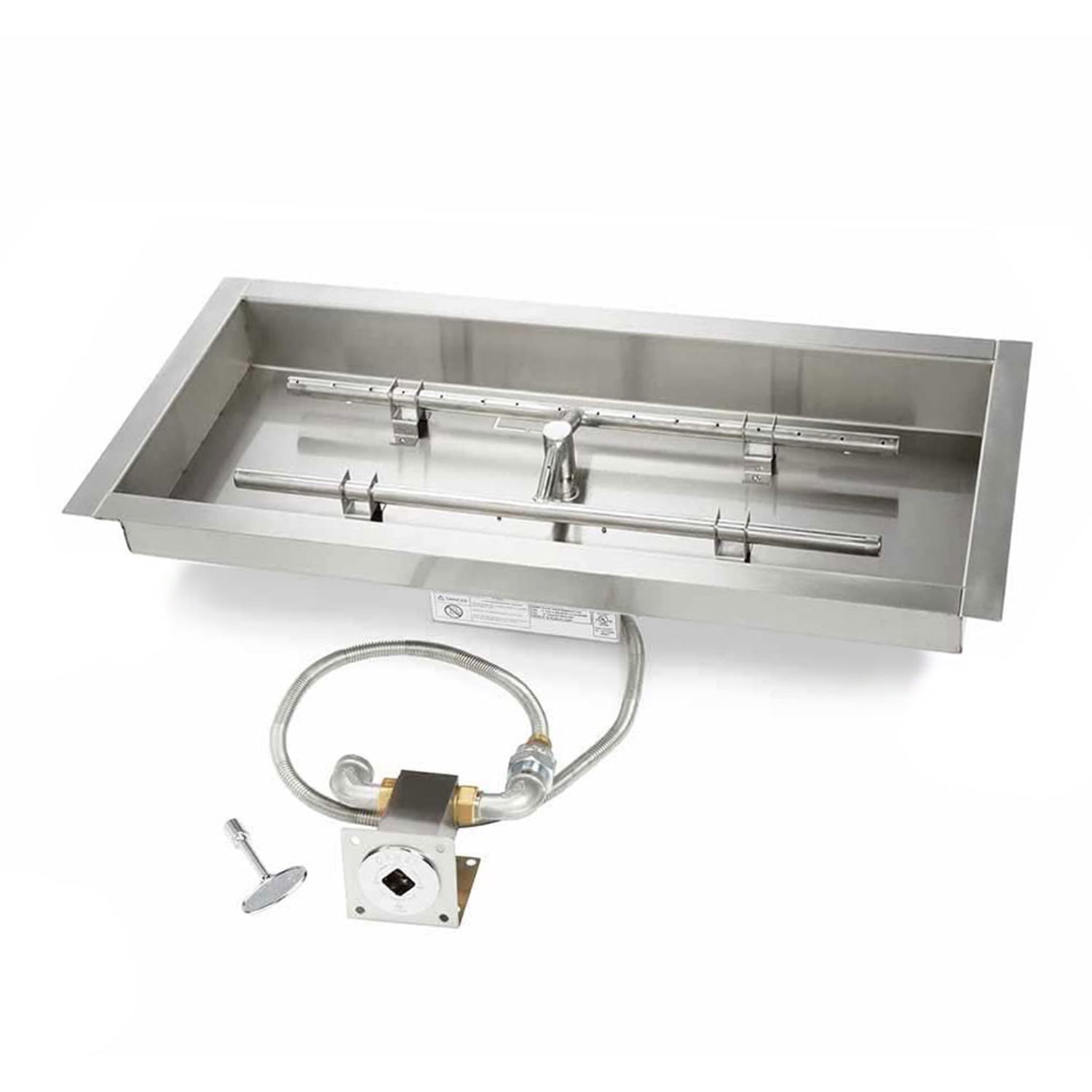
How to Choose a Replacement Burner
Selecting the right replacement burner for your gas fireplace involves several considerations to ensure compatibility, safety, and performance. Here are key factors to keep in mind.
Compatibility: Ensure the replacement burner is compatible with your specific fireplace model. Check the manufacturer’s specifications and consult with a professional if needed. Using an incompatible burner can lead to safety hazards and poor performance.
Type of Gas: Determine whether your fireplace uses natural gas or propane, as burners are designed specifically for each type. Using the wrong type of burner can result in improper combustion and safety risks.
Size and Shape: Measure the dimensions of your existing burner and the fireplace cavity to ensure the replacement fits properly. An ill-fitting burner can affect the appearance of the flames and the efficiency of the fireplace.

Heat Output: Consider the heat output of the replacement burner, measured in British Thermal Units (BTUs). Choose a burner that provides adequate heat for your space without exceeding the capacity of your fireplace.
Safety Features: Look for burners with built-in safety features, such as oxygen depletion sensors and automatic shutoff mechanisms. These features enhance the safety of your gas fireplace, particularly in ventless models.
Warranty and Support: Opt for burners from reputable manufacturers that offer warranties and customer support. A good warranty can provide peace of mind and protection against defects or issues with the burner.

Installation Process for a Replacement Burner
Replacing a gas fireplace burner involves several steps that should be followed carefully to ensure safe and effective installation. While some homeowners may choose to perform the replacement themselves, it is often advisable to hire a professional to handle the job.
Turn Off the Gas Supply: Before beginning the replacement process, turn off the gas supply to the fireplace. This is crucial for safety to prevent gas leaks or accidental ignition.
Remove the Old Burner: Carefully remove the existing burner according to the manufacturer’s instructions. This may involve disconnecting gas lines, removing screws or brackets, and lifting the burner out of its housing.
Inspect the Fireplace: Before installing the new burner, inspect the fireplace for any signs of damage or wear. Check the gas lines, valves, and ignition system to ensure they are in good condition, and replace any damaged components as needed.
Install the New Burner: Position the replacement burner in the fireplace, making sure it fits securely and is properly aligned. Connect the gas lines and secure the burner in place using screws or brackets.
Test for Leaks: Once the new burner is installed, turn the gas supply back on and test for leaks using a gas leak detector or a mixture of soap and water. Apply the solution to the gas connections and look for bubbles, which indicate a leak. If a leak is detected, tighten the connections and retest.
Ignite the Fireplace: Finally, ignite the fireplace and observe the flames to ensure the burner is functioning correctly. Check for consistent flame patterns, proper heat output, and any unusual odors or sounds.

Maintenance Tips for Gas Fireplace Burners
Regular maintenance of your gas fireplace burner is essential to ensure its longevity and efficient operation. Here are some maintenance tips to keep your burner in top condition.
Clean Regularly: Dust and debris can accumulate on the burner, affecting its performance. Clean the burner regularly using a soft brush or vacuum to remove dirt and ensure proper airflow.
Inspect for Damage: Periodically inspect the burner for any signs of wear, such as cracks, rust, or warping. Address any issues promptly to prevent further damage and maintain safety.
Check Gas Lines: Inspect the gas lines and connections for any signs of leaks or wear. Tighten any loose connections and replace damaged lines to ensure safe operation.
Test Ignition System: Ensure the ignition system is functioning correctly by testing it regularly. Replace worn or damaged ignition components to maintain reliable ignition.
Monitor Flame Quality: Regularly observe the flames produced by the fireplace. Consistent, blue flames indicate proper combustion, while yellow or uneven flames may suggest a problem with the burner.
Schedule Professional Inspections: Have your gas fireplace and burner inspected by a professional at least once a year. A professional can identify and address issues that may not be apparent to the homeowner, ensuring safe and efficient operation.
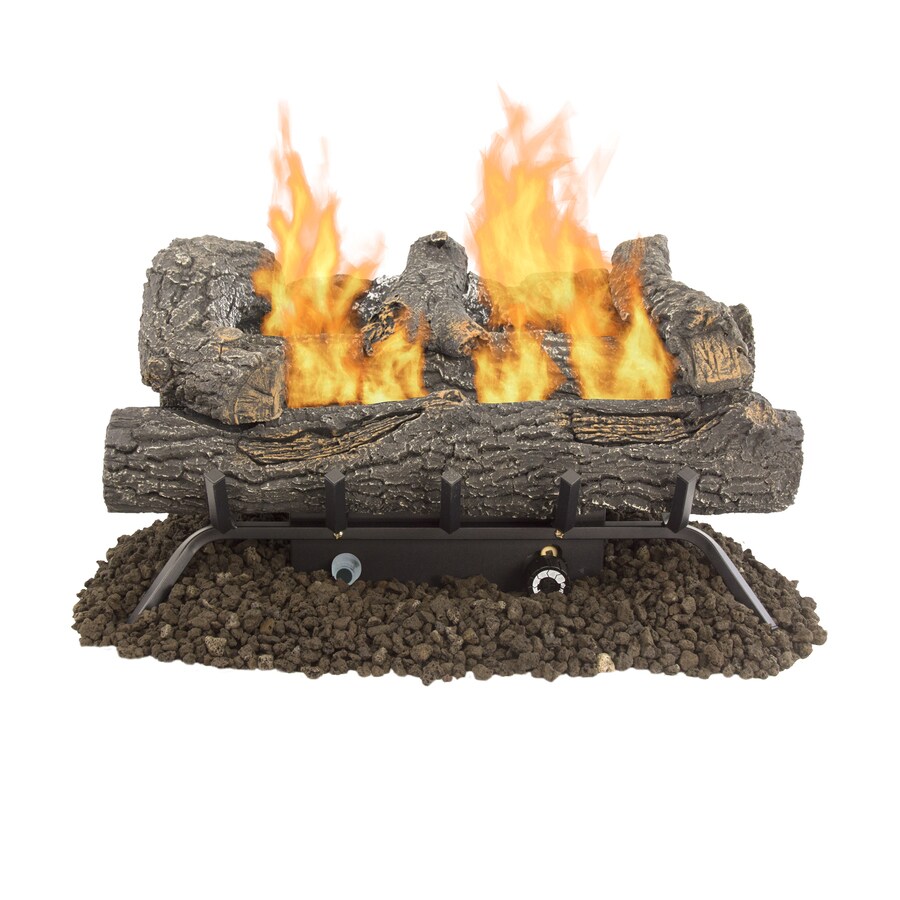
Common Mistakes to Avoid
Incorrect Burner Selection: Choosing the wrong burner for your gas fireplace can lead to safety hazards and poor performance. Ensure the replacement burner is compatible with your fireplace model and gas type. Consult the manufacturer’s specifications and seek professional advice if needed.
Improper Installation: Improper installation of the burner can result in gas leaks, inefficient combustion, and safety risks. If you are not confident in your ability to install the burner correctly, hire a professional to handle the job.
Neglecting Regular Maintenance: Failing to perform regular maintenance on the burner can lead to decreased efficiency, increased fuel consumption, and potential safety hazards. Clean the burner regularly, inspect for damage, and address any issues promptly.
Ignoring Signs of Wear: Ignoring signs of wear, such as inconsistent flames, soot buildup, or unusual odors, can lead to more serious problems over time. Addressing issues early can prevent costly repairs and ensure safe operation.
Overlooking Safety Features: Choosing a burner without built-in safety features can compromise the safety of your gas fireplace. Look for burners with features such as oxygen depletion sensors and automatic shutoff mechanisms.
Skipping Professional Inspections: Skipping annual professional inspections can result in undetected issues that affect the performance and safety of your gas fireplace. Regular inspections by a professional can identify and address potential problems before they become serious.

What are the benefits of replacing a gas fireplace burner?
Replacing a gas fireplace burner can improve the efficiency, safety, and appearance of your fireplace. A new burner ensures clean and efficient combustion, reducing fuel consumption and emissions. It also enhances the appearance of the flames, creating a more enjoyable and aesthetically pleasing fire. Additionally, a properly functioning burner reduces the risk of gas leaks and other safety hazards.
How often should I replace my gas fireplace burner?
The lifespan of a gas fireplace burner can vary depending on the quality of the burner, usage, and maintenance. Generally, burners can last between 10 to 15 years with proper care. However, signs such as inconsistent flames, soot buildup, or physical damage may indicate the need for replacement sooner. Regular inspections and maintenance can help determine when it is time to replace the burner.
Can I replace a gas fireplace burner myself?
While it is possible to replace a gas fireplace burner yourself, it is often recommended to hire a professional. The replacement process involves handling gas lines and ensuring proper installation, which can be complex and requires technical knowledge. A professional can ensure the burner is installed safely and correctly, reducing the risk of gas leaks and other issues.
What should I do if I smell gas near my fireplace?
If you smell gas near your fireplace, immediately turn off the gas supply and avoid using any electrical switches or open flames. Ventilate the area by opening windows and doors. Contact a professional technician to inspect the fireplace and identify the source of the gas leak. Do not attempt to use the fireplace until the issue has been resolved and the fireplace is deemed safe.
How can I ensure the longevity of my gas fireplace burner?
To ensure the longevity of your gas fireplace burner, perform regular maintenance, including cleaning the burner, inspecting for damage, and checking gas lines and connections. Use the fireplace according to the manufacturer’s guidelines and avoid exposing the burner to corrosive elements. Schedule annual professional inspections to identify and address potential issues early. Regular maintenance and proper use can help extend the lifespan of the burner and ensure safe operation.
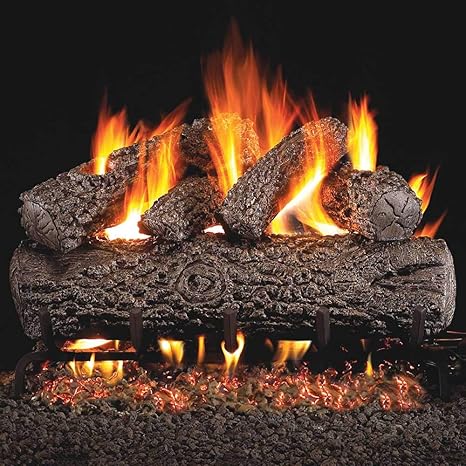
The crackling fire, the warm glow, the cozy ambiance – gas fireplaces offer a delightful escape from the cold. But what happens when the heart of your fireplace, the burner, starts to sputter and falter? Replacing a gas fireplace burner is more than just a simple upgrade; it’s an opportunity to breathe new life into your cherished hearth. From boosting efficiency and safety to unlocking a world of customizable flames, a new burner can transform your fireplace into a modern marvel, adding both beauty and warmth to your home for years to come.
Related Posts: